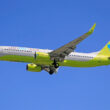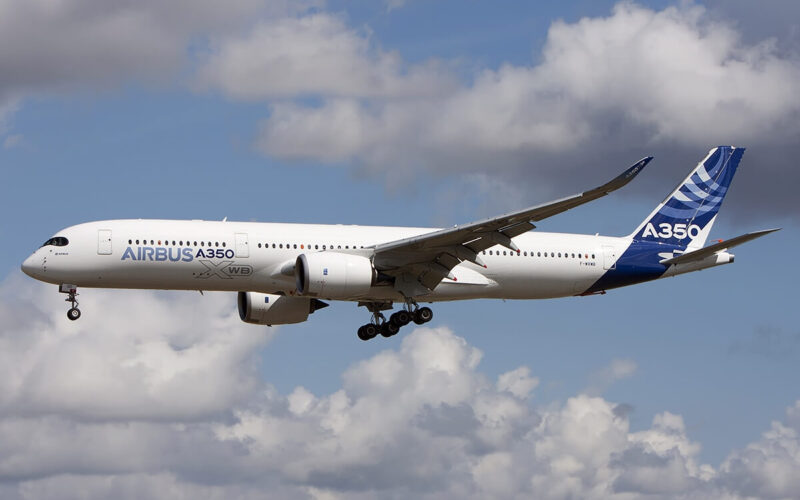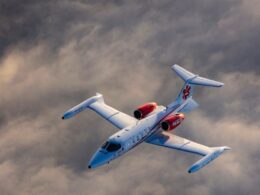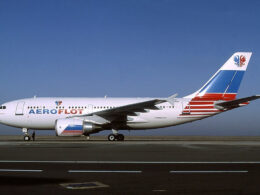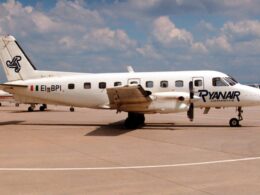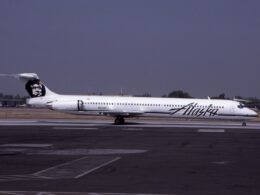Why Airbus Is The Most Influential Aircraft Manufacturer – Celebrating 50 Years Of Airbus
Today is a very special day in aviation, as Airbus celebrates its 50th anniversary. The aircraft manufacturer, tracing its roots back to Concorde, has greatly challenged every company that builds commercial aircraft.
Airbus is known for its many innovations in commercial airspace – from being the first company to introduce a wide-body aircraft with a two engine configuration, inventing the revolutionary fly-by-wire systems, to producing the biggest passenger aircraft – the Super Jumbo Airbus A380.
But honestly speaking, the company struggled at first, as the Airbus A300 had many obstacles on its way to its first flight.
However, the company prevailed by using creativity and persistence and as a result, secured its future. The future which has brought success, innovation and a huge amount of influence to the way every single one of us flies every day.
But influence is a very broad term that can be spun and twisted in various ways. So, instead of broadly speaking about Airbus‘ history, to celebrate #Airbus50, let’s try to define how the European manufacturer has influenced the way we soar through the skies!
Airbus traces in Concorde
Essentially what Airbus is is a consortium between several countries – in 1969 it was Great Britain, France and West Germany. Back then, United States‘ manufacturers such as Boeing, McDonnell Douglas and for a brief period of time, Lockheed, dominated the aviation market.
European manufacturers did not see much success in building jets. That‘s not to say they were complete failures, but back then the passenger numbers could not justify every country building their own aircraft, in addition to the American competition. Thus, the competition had forced such manufacturers as de Havilland, which built the Comet or Sud-Aviation, which built the Caravelle, to go bust.
In order to counter the American presence, the three European nations collaborated on Concorde. But Concorde operated in a niche market, flying just several routes from Europe and offering tickets at a premium price.
So, to properly fight the Americans in the skies, the three countries I‘ve mentioned above (West Germany was not involved in Concorde), said yes to a memorandum, which laid down the foundations of Airbus in 1967.
Two years later, the official agreement to launch the first Airbus aircraft, the A300, was signed.
The day was the 29th of May, 1969.
What Concorde had brought to the table we all know – an unprecedented level of luxury and speed while traveling through the skies. Airbus had major influence on the Concorde. As the supersonic jet had departed for the last time, one of the reasons was that Airbus simply refused to provide spare parts to maintain the jet.
But let’s go back to the Airbus A300. The aircraft that had started it all officially.
50 years of the Airbus A300
While it seemed like smooth sailing at first, the A300 encountered several issues at first. But this is where the creativity of the Airbus showed its face.
Firstly, plagued by the cost of Concorde, as the SST was encountering huge production delays, both Britain and France were very doubtful about the future of Airbus. But the French government came to their senses because Henri Ziegler had told them bluntly that they would be responsible for 30 000 people being unemployed. Nevertheless, Britain had pulled the plug and now the program had a huge financial hole to fill. Fortunately, Germany increased its investment in the project and as a result, it could continue successfully.
Secondly, there was the engine issue. Airbus had contacted Rolls-Royce to build special engines for them, as Airbus planned something unheard of at the time – to build a wide-body jet with two engines. In the 70s, the only wide-body aircraft apart from the Boeing 747, were the two tri-jets. Namely, the McDonnell Douglas DC-10 and the Lockheed L-1011. As we know, the Boeing 747 carriers four engines.
At that time, the DC-10, the L-1011 and the 747 were only able to fly across the Atlantic due to ETOPS, which meant that the A300 was restricted to short or medium haul routes above land.
Anyways, Rolls-Royce was busy with the RB211, which was too small for the planned A300. The jet had no engine. However, at the same time, Airbus had realized that a 300 passenger version of the A300 would be probably too big for wide-spread commercial usage. So, what they did was they shrunk the A300 to 250 maximum seats, slap on the RB211 – problem solved.
But lastly, Airbus had not only to make the aircraft, but they also had to sell it. ETOPS had hindered the aircraft a lot, and Airbus struggled to market it.
Marketing efforts
The Airbus A300 made its maiden voyage in 1972. Two years later, the aircraft officially commenced a commercial flight with Air France. But selling the aircraft was a struggle. At first, only Air France and Lufthansa (LHAB) (LHA) operated the A300.
 Lufthansa Airbus A300
Lufthansa Airbus A300
ETOPS compliance and the 1973 oil crisis did not help either.
While Airbus struggled for orders, the company knew they had to do something. So, they did – they set off on a tour with the A300 in 1973. Flying from Toulouse to the United States via Dakar and Sao Paulo, Airbus‘ executives needed to convince airline CEO‘s that Airbus‘ products were on-par, if not better than aircraft that were built by Boeing, McDonnell Douglas or Lockheed. The move was daring and it succeeded, as Eastern Airlines showed interest in the A300.
But the rewards only showed up later – in 1978, Eastern Airlines ordered 23 Airbus A300s.
Airbus also heavily looked into the Asian market, as they saw huge potential there as well. In 1974, Korean Air became the first non-European airline to order A300.
Slowly, but surely the aircraft started gaining orders from all over the world. As the FAA lifted the ETOPS restrictions, the A300 could also operate medium-haul routes over more remote areas, including huge water masses.
In total, Airbus delivered 561 A300s, with the last one rolling out of the factory in 2007.
To sum up, the Airbus A300 had showcased airlines that tri-jet wide-bodies were not the future of air travel. The A300 led the way for the future of the wide-body twin-engine aircraft. Airbus had started its journey with the A300 – if the project was unsuccessful, the two governments in France and West Germany would’ve canceled Airbus altogether.
So, that‘s the first reason why Airbus is hugely influential.
The second? The Airbus A320.
Fly-by-wire usage on the Airbus A320
Airbus had set a goal for themselves – to develop various aircraft types to serve every market possible, from short-haul to long-haul.
From the A300, the A310 followed. Later on, in 1984, Airbus announced the Airbus A320, a direct competitor to the Boeing 737, which at the time was the most successful aircraft in the world. It still is, as Boeing has delivered over 10 000 of them as of 2019. In total, Airbus has delivered more than 12 000 various jets to airlines, with their 12 000th aircraft going to Delta Airlines (DAL) .
Anyhow, the Airbus A320 was far more successful from the get-go. As it was announced by Airbus, the aircraft already had 84 orders secured. American Airlines (A1G) (AAL) (not the airline, but the airlines located in the country), namely Pan Am, ordered 16 A320’s with an option to buy 34 more. A year later, in 1986, Northwest Airlines ordered a huge amount of the Airbus A320 – a whopping 100 of them.
The aircraft itself was not revolutionary, as there was already the MD-80 and the previously mentioned 737 competing for the short-haul market.
However, the Airbus A320 was hugely influential because of one reason – its controls, the fly-by-wire system. On the business side of things, the system reduced the aircraft’s weight and airlines had an easier job of maintaining it.
 Spirit Airlines A320
Spirit Airlines A320
For pilots, it meant that the handling of the aircraft was far better than using manual flight controls and, as Airbus began using fly-by-wire throughout all of its aircraft, the training process between different aircraft was far easier, making it much easier to advance your pilot career.
For passengers, the system means much-improved safety and indirectly, reduced flight ticket costs. The system prevents excessive inputs that would hinder the aircraft’s safety.
So, the fly-by-wire presents us with the second reason.
Luxury is the third.
The unprecedented luxury of the Airbus A380
When the Boeing 747 came, it showcased to the world how comfortable can passengers travel, while to airlines it looked like a brilliant cash-cow, as it could seat so many travelers. To some extent, it also offered a luxury that passengers had never seen before.
But on the 25th of April, 2005, the Airbus A380 took flight for the first time.
It challenged the Queen Of The Skies in a market it simply had dominated for almost 40 years at that time.
The A380 brought luxury and comfort to the next level. A hotel in the sky, a bar, a spa – the list goes on, but the point is, the A380 offers an unprecedented level of luxury onboard.

Emirates Airbus A380 Luxury Spa
With the Super Jumbo, as the aircraft is nicknamed, Airbus managed to build an aircraft that every aviation enthusiast, every traveler, every person on this planet wishes to travel on. Okay, the last one might be a bit of an exaggeration, but you get the point I‘m making!
Thus, this is the third reason.
Nobody is perfect
But as we celebrate the 50th anniversary of Airbus, we need to remember that nobody is perfect. While the manufacturer certainly influenced the way we travel, some decisions are very questionable.
For example, the fact that barely any Airbus aircraft fly with cargo airlines indicates that their planes have a fairly short lifespan compared to Boeing‘s aircraft, which are easily converted into freighters.
Some of the aircraft decisions were shocking as well – the Airbus A340 was a failure, as for some reason Airbus thought that the future of long-haul was with quad-engine aircraft. The Boeing 777, which came out two years later, proved that Airbus was very wrong. As of 2019, the 777 outsells the A340 by 5 times and Boeing still produces their jet.
Nevertheless, when you sum up the 50 years of Airbus – the overall lookout is very positive. The Airbus name carries a lot of respect in the aviation industry.
So much so, that the CEO of their biggest competitor, Boeing, has congratulated them on this anniversary:
From all of us at Boeing, congratulations on 50 years, @Airbus. pic.twitter.com/1iQw10m5qe
— Dennis A. Muilenburg (@BoeingCEO) May 29, 2019

